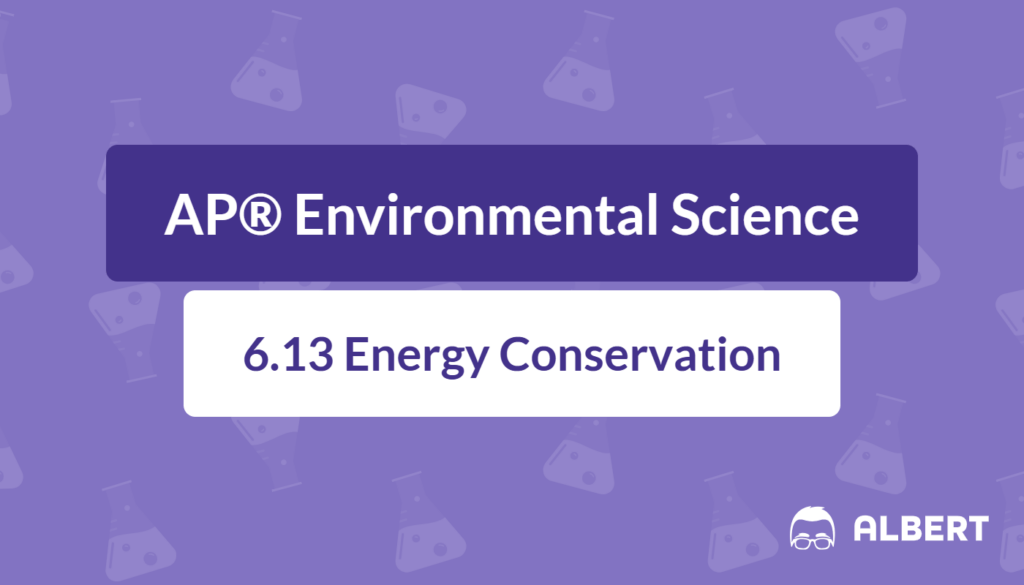What We Review
Introduction
Energy conservation is the practice of reducing energy use through thoughtful choices and efficient technologies. In environmental science, it is vital for lowering greenhouse gas emissions, preserving natural resources, and maintaining ecological balance. Because so many aspects of daily living require energy, improved conservation measures can significantly benefit both individuals and the planet. This article introduces the core principles of energy conservation and outlines practical strategies for reducing energy use in homes and on a larger scale.
What Is Energy Conservation?
Energy conservation refers to minimizing energy consumption by using resources more efficiently and adopting habits that reduce waste. When energy is conserved, fewer fossil fuels are burned in electricity generation, heating, or transportation. Therefore, conserving energy has a direct impact on cutting greenhouse gas emissions and mitigating climate change.
Energy conservation is not just about saving electricity. It also includes strategically using heating systems, water supplies, and transportation. Because energy use is intertwined with economic and environmental concerns, every effort to decrease waste can help reduce operational costs and protect global ecosystems. This dual benefit of saving money and preserving the environment makes energy conservation a key principle in AP® Environmental Science.
Example: Simple Calculation for Saving Energy
- Suppose a household uses 1{,}000 kilowatt-hours of electricity each month.
- If that household implements small changes (turning off lights, unplugging devices), it might cut overall consumption by 10%.
- Therefore, the household would save 100 kilowatt-hours each month.
- Over a year, that amounts to 100 \times 12 = 1{,}200 kilowatt-hours saved, which can lower both electricity bills and fossil fuel emissions.
Methods for Conserving Energy at Home
Residential energy use covers heating, air conditioning, appliances, and water consumption. Although each part of household usage seems small, combining multiple conservation methods can result in substantial savings. Moreover, adopting these habits can help reduce fossil fuel dependence.
Adjusting the Thermostat
One straightforward way to reduce energy consumption is to lower (or raise) the thermostat setting. Because heating and air conditioning systems use considerable energy, reducing unnecessary temperature changes can have a measurable environmental impact.
- Keeping the house cooler by a few degrees in winter and slightly warmer in summer reduces the load on heat and air conditioning systems.
- Limiting dramatic temperature changes ensures that households use only the energy truly needed for comfort.
Example: Estimating Savings
- Assume a home usually maintains 72^\circ \text{F} in winter.
- Lowering the thermostat to 68^\circ \text{F} may cut heating costs by around 5% to 10%.
- If the monthly heating bill is \$100, savings could be \$5 to \$10 each month.
- Annually, this small change might save well over \$60, depending on local climate and electricity rates.
Water Conservation
Water heating also requires energy. Therefore, shortening shower time and fixing water leaks can significantly lower energy usage. Less hot water used means less energy needed to heat it. Additionally, conserving water benefits local ecosystems by reducing demand on freshwater sources.
Example: Shorter Showers
- A typical showerhead uses 2.5 \text{ gallons per minute}.
- Reducing shower time from 10 minutes to 7 minutes saves 2.5 \times 3 = 7.5 gallons of hot water.
- Consequently, using less hot water reduces energy consumption for heating and lessens water bills.
Energy-Efficient Appliances
Energy Star-rated appliances meet higher efficiency standards than older models. Because these appliances are designed to use less electricity and water, they lower both utility costs and environmental impacts. Furthermore, they often come with clear energy and cost savings data from the manufacturer.
Example: Refrigerator Replacement
- Suppose an older refrigerator uses 700 \text{ kWh} a year.
- A new Energy Star model might use 400 \text{ kWh} a year.
- By upgrading, one can save 700 - 400 = 300 \text{kWh} annually.
- If each kilowatt-hour costs \$0.12, the yearly savings would be 300 \times 0.12 = \$36.
- Over 10 years, that is \$360 in electricity cost reductions.
Conservation Landscaping
Conservation landscaping involves using plants and structures to limit household energy needs. Strategically planted shade trees reduce indoor temperatures during summer, while windbreaks can lower heat loss in winter. Consequently, heat and air conditioning systems do not have to work as hard.
Example: Planting Shade Trees
- A large deciduous tree blocks sunlight in summer, decreasing indoor heat gain.
- This practice can reduce air conditioning energy use by 10% or more in some regions.
- During winter, leaves drop, allowing more sunlight to warm interior spaces.
- Resulting energy savings translate into lower bills and reduced carbon footprints.
Methods for Conserving Energy on a Large Scale
Beyond individual homes, societies can adopt large-scale conservation methods that significantly reduce fossil fuel consumption. Because transportation and buildings function on a grand scale, even small efficiency improvements lead to meaningful environmental benefits.
Fuel Economy Improvements
Vehicles that run on fewer gallons of fuel per mile help lessen the depletion of nonrenewable resources and carbon dioxide emissions. For instance, better engine design or deploying lighter materials can raise fuel efficiency across entire fleets.
Example: Traditional Vehicle vs. Hybrid
- Traditional car: 25 \text{ miles per gallon}.
- Hybrid car: 50 \text{ miles per gallon}.
- Driving 12{,}000 miles a year with a traditional car consumes 12{,}000/25 = 480 gallons.
- A hybrid would need just 12{,}000/50 = 240 gallons.
- The difference of 240 gallons yearly reduces fuel costs and carbon emissions across a broad population.
Battery Electric Vehicles (BEVs) and Hybrid Vehicles
Battery electric vehicles (BEVs) rely entirely on electrical energy, whereas hybrids combine gasoline engines with electric motors. Although electric vehicles still draw electricity, often from power plants, they offer a way to transition away from fossil-fuel-intensive driving. Furthermore, if the electricity grid incorporates renewable energy sources, the overall carbon footprint declines even further.

Mariordo Mario Roberto Duran Ortiz, CC BY-SA 3.0, via Wikimedia Commons
Example: Environmental Impact of Switching to BEVs
- Assume an average gasoline vehicle creates around 4.6 \text{ metric tons of carbon dioxide} per year.
- A battery electric vehicle directly emits 0 metric tons of CO₂ from driving because it does not burn gasoline.
- However, electricity production is not always carbon-free. If the source is 50% renewable, then large emissions cuts are still achieved.
- Over time, a greater shift to renewables can make BEVs even cleaner.
Public Transportation
Public transit systems, such as buses and trains, spread the energy cost across multiple passengers. Consequently, reliance on private vehicles decreases, leading to lower per-person fuel consumption.
Example: Reducing Carbon Emissions with Public Transit
- If one person drives 15 miles to work each day, that equates to 300 miles per month (assuming 20 workdays).
- An average car might emit about 0.78 \text{ pounds of CO}_2 per mile, leading to 300 \times 0.78 = 234 pounds of CO₂ monthly.
- Taking the bus could cut these emissions, especially if the bus service is well-used, because each trip’s energy use is shared.
Green Building Design
Green buildings integrate features that reduce overall energy consumption. Common designs include solar panels, natural lighting systems, and the use of insulated materials. Therefore, new structures can rely less on external power sources and produce fewer emissions.
Example: Solar Panel Installation
- A small home might install a 4 \text{ kW} solar panel system.
- Over one year, this system could generate around 4{,}000 \text{ kWh} of electricity, depending on local weather.
- If that home uses 8{,}000 \text{ kWh} per year, the solar system provides 50% of its demand.
- As a result, dependence on fossil fuels decreases, and monthly bills decline.
The Impact of Energy Conservation on the Environment
Conserving energy directly lowers the amount of fossil fuels burned for electricity, transportation, and heating. Therefore, greenhouse gas emissions drop, helping slow global warming. Meanwhile, using household and industrial energy more wisely reduces pollution and protects biodiversity. Additionally, improved air quality benefits human health, while more stable climates help preserve habitats for wildlife. As these changes take hold on a large scale, ecosystems become more resilient against the impacts of climate change.
Real-World Implications
- Lower Greenhouse Gas Emissions: Efficient energy use cuts carbon dioxide and other greenhouse gases.
- Better Air Quality: Declines in fossil fuel combustion reduce soot and smog, improving respiratory health.
- Resource Conservation: Using less energy reduces the strain on natural resources, preserving them for future generations.
- Cost Savings: Households, businesses, and governments all benefit from reduced energy expenses, freeing funds for other programs.
Conclusion
Energy conservation encompasses both simple household adjustments and large-scale policy choices. By improving home efficiency through thermostat settings, water conservation, energy-efficient appliances, and conservation landscaping, overall energy demands are diminished. On a broader scale, fuel economy improvements, battery electric vehicles, public transportation, and green building designs shape more sustainable communities.
Although these strategies may require varying degrees of planning and initial investment, they hold the promise of reducing carbon footprints, saving costs, and preserving limited resources. Implementing even a few of these methods can create lasting benefits for local ecosystems and the planet at large. As the science of sustainability continues to evolve, energy conservation remains central to combating climate change and ensuring a healthier environment for future generations.
Key Vocabulary
- Energy Conservation
- The practice of reducing energy use through efficient technologies and behaviors.
- Greenhouse Gas
- A gas, such as carbon dioxide, that traps heat in the atmosphere and contributes to global warming.
- Fuel Economy
- A measure of how many miles a vehicle can travel per gallon of fuel, indicating efficiency.
- Battery Electric Vehicles
- Cars that run entirely on electricity stored in batteries, eliminating direct emissions from driving.
- Green Building Design
- Architectural methods that use energy-saving materials and technologies to reduce a building’s environmental impact.
Sharpen Your Skills for AP® Environmental Science
Are you preparing for the AP® Environmental Science test? We’ve got you covered! Try our review articles designed to help you confidently tackle real-world AP® Environmental Science problems. You’ll find everything you need to succeed, from quick tips to detailed strategies. Start exploring now!
- AP® Environmental Science: 6.10 Review
- AP® Environmental Science: 6.11 Review
- AP® Environmental Science: 6.12 Review
Need help preparing for your AP® Environmental Science exam?
Albert has hundreds of AP® Environmental Science practice questions, free response, and full-length practice tests to try out.








